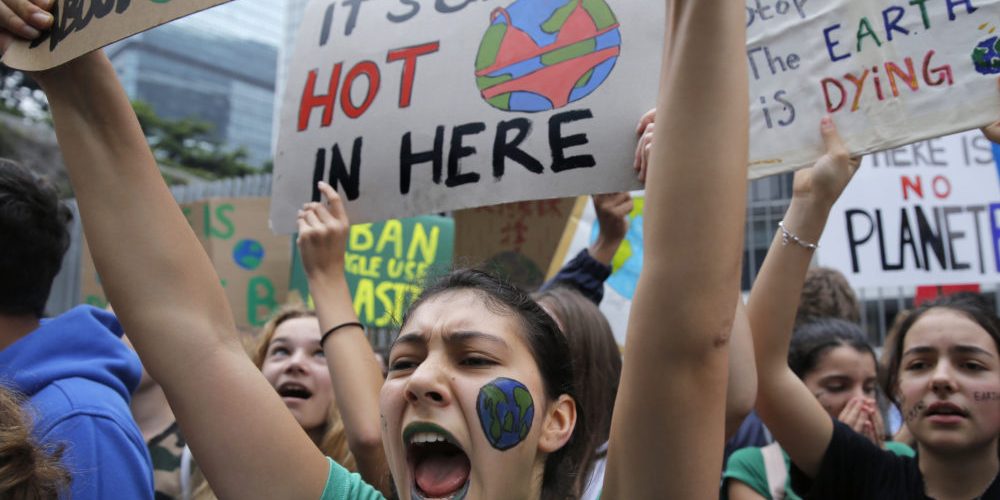By: Isabella De Palo Garcia Perez

The echoes of the rainwater and sea salt are sloshing under my feet at the Aquarium stop of the Blue Line. If it was high tide, I might be knee deep on my commute home; slipping under the harbor from East Boston just so I could drown before I hit Government Center. Tomorrow, I will wake and the city will say the same thing: “We can rebuild. We can fix it.” They throw money at a sinking ship and expect me to get on board.
In 2016, Boston launched Climate Ready Boston, a mapped projection for the flood resilience and heat index in the coming years. The project mapped places they predicted would be underwater by 2070. However, not many of the plans have been implemented. There are no living shorelines and our city still sinks.
Instead, we fund the Federal Emergency Management Agency and flood relief where hurricanes reign terror. A major issue with programs like FEMA is outcomes are aimed at recovery over resiliency. Resiliency is the preventative measure we are currently missing. According to the Brookings Institution, only 14 percent of FEMA’s $81 billion of total disaster grant funding spent since 2005 has gone to programs that aim to advance resilience to climate related disasters—smart constructing and rebuilding. The US is willing to let people drown and die in natural disasters augmented by climate change. The government will just throw money at the problem until the next one. Then they do it again. Hurricane Katrina. Sandy. Ida. It is a repetitive process they do not seem inclined to fix.
We know the US’s recent relationship with climate policy has been shaky. We left the Paris Agreement under Trump, rolled back environmental regulations, and attempted to fund the Keystone Pipeline. We set ourselves back years in climate policy as the slim window for action narrows. Projections seem decades out, and we believe the obvious truth will get through to politicians. Some will survive this storm, but the next? Furthermore, this is not just a US issue, but a global one. Some countries are capable of pushing climate change policy and enforcing it. Other countries cannot. Hurricanes in the Gulf do not just affect the US. They impact all the other countries before hitting our shores. Just look at Puerto Rico andHaiti.
Nevertheless hope is not lost. Youth movements across the US and globe have been pushing back and demanding change. It is time for governments to step up. One of President Biden’s most recent actions from August 2021 stated that nearly $5 billion would be allotted to resilience funding in order to help communities prepare for extreme weather and climate-related disasters. More resilience-based policies focusing on preventive measures need to be implemented, rather than putting a band-aid on the situation by allowing the money to be used to rebuild without a durability stipulation.
Once the US has accounted for our own resiliency with projects like energy efficient buildings that withstand floods, it can levee its power globally again. The world lost faith in the US during the Trump administration. When we push back against the former administration’s rhetoric, the rest of the world could be more inclined to listen. Then the US must help build and share new ideas for policy and resiliency. Whether that means having companies contracted out to places like Ecuador to help teach them how to build solar panels rather than rely on the crude oil that split and polluted a river back in 2020 or negotiating a new law at the next global climate summit; we can start anew. The everyday American needs to push for their government to do just that.
However, that is the federal government. The local government is just as responsible. Climate change is a global issue, but change starts at home. Lobbying local officials, such as those in Boston to pursue policy plans like Climate Ready Boston’s flood adapted buildings, elevated landscapes, and living shorelines, will better protect homes from the future that lies ahead. Not only would local changes help protect the land for future generations, but it will generate and redirect jobs lost from unsustainable practices and allot money to training for sustainable ones. People will begin to get back on their feet when society accepts and promotes a more forward-thinking future. Pushing climate change policy and disaster relief resilience will, of course, save money, but most importantly save lives. Preventative measures might cost more upfront, might need a bigger political and economic backing in order to get through as a law, but they will be the ones to stop the world from hitting the point of no return. Choosing disaster relief projects that do not work towards a future means that you have stopped thinking we have one. That is no way to live.
